Reviewed by Grant McCreary on April 26th, 2015.
I love John James Audubon’s birds. As a child, I received a copy of The Audubon Society Baby Elephant Folio from a friend of the family. I loved looking through the fantastic illustrations, my mind blown by images of birds that, I believed at the time, I would never see. That book remains one of my most prized possessions. Audubon, however, has always had his detractors. His birds were posed too outlandishly for some, or they weren’t ornithologically accurate. But, as David Sibley insightfully points out in his introduction to one edition of Audubon’s The Birds of America, “Of course they are a bit dramatic and over-embellished, but each painting tells a story, not just of the life history of the birds, but also of the excitement and wonder that Audubon experienced as he explored the wilderness.”
Still, I couldn’t help but be bothered by some of the plates. Audubon’s Blue-winged Teals, for instance, seem awkward somehow. The birds are positioned uncomfortably close to each other, and the background of distant vistas doesn’t look right, somehow. After seeing Audubon’s original painting, it’s obvious why. JJA originally had the female positioned further behind the male, and the background was one of grasses and a small channel of water immediately beneath the birds. The ducks’ posture that seems so awkward for birds flying high above the terrain, as depicted on the engraved plate, is perfect for birds that are coming down for a landing, as in the original work (see below). Insights such as this are just one of the many things to like about Audubon’s Aviary: The Original Watercolors for The Birds of America.
Audubon’s Aviary is a companion book to the exhibition of the same name by the New-York Historical Society. The society owns Audubon’s original watercolors and put them on display to the public in this exhibition that ran from 2013-2015. (Here are some of my thoughts on that exhibition.) The book “showcases and reproduces for the first time the New-York Historical Society’s entire cache of 474 one-of-a-kind watercolors by John James Audubon.”
But does the world need another book of Audubon art? More to the point – do you really need another Audubon book in your library? In the case of Audubon’s Aviary, the answer is an emphatic yes. The Audubon art that most of us are familiar with are the prints based on the engravings by Robert Havell Jr. Havell based them, of course, on Audubon’s original paintings and notes. But they are not always a strict copy. Sometimes he added a background or moved things around on Audubon’s instruction. Such changes are obvious here, like when you see the painting of the Black Rail adult and chick on a blank page with only Audubon’s hand-written notes. Havell added the appropriate habitat during the engraving process. Seeing the original work is both enlightening and exciting.
The highlight of Audubon’s Aviary is 114 of Audubon’s original paintings, reproduced wonderfully – and largely. Vertically oriented paintings are shown almost full-page. Which means, because this book is pretty big, that they are roughly 8.25 x 12.5 inches (21 x 31.75 centimeters). Horizontal images extend across the gutter onto a portion of the facing page, except in a couple of cases where they are limited to just the one page.
These horizontal paintings are the only problematic thing about the book. The book’s size doesn’t allow for the pages to open completely flat, which makes some of the page-spanning images look awkward. But there’s no good solution. The images could be limited to one page in their natural orientation, but that would render them relatively small on the page, with lots of wasted white space. They could be rotated, which would allow them to be shown at a larger size. But that would require the reader to turn the book in order to fully appreciate the works, something that would not be easy for a book of this size and heft. In the end, I think they made the best choice.
If you’ve been reading carefully, you’ve noticed that this book claims to include all 474 paintings in the society’s collection, but only 114 of them are given the treatment described above. The remaining 360 are, in fact, included, but at a much smaller scale of nine to a page. Some of these are shown in greater scale and detail elsewhere in the book, such as in one of the introductory essays, but I really wish all of them could have been treated equally. But such a thing would have been unfeasible, unfortunately, as it would result in a book many times larger…and many times more expensive.
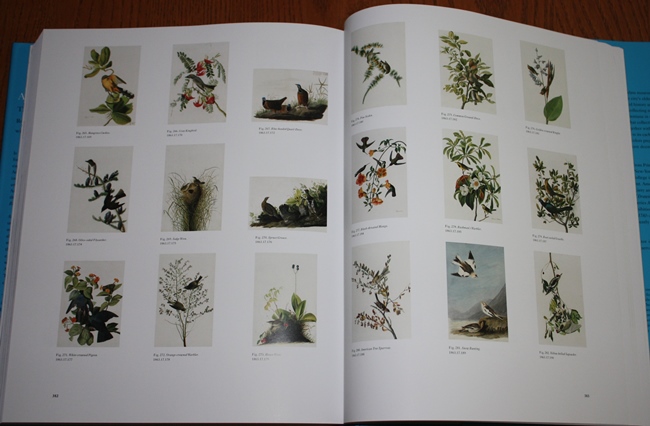
The 'Rest of the Flock', the smaller-scale remainder of the painting collection.
The exhibit’s curator, Roberta Olson, provides informative notes that accompanies each of the 114 featured plates. She touches on different elements, such as the natural history of the bird, Audubon’s encounters with the bird, and insights into the techniques used for the painting. Each mini-essay is different, depending on what – I’m assuming – she found interesting. And interesting it is. She usually devotes more time to Audubon, his subjects, and his work in the painting, which is exactly the information I’m looking for in a book such as this.
Perhaps the most interesting of all is when Olson describes the differences between Audubon’s painting and the subsequent engraved print. A small image of the latter is often included so that they can be visually compared, while Olson describes the differences and their origins. For example, the Tundra Swan ended up submerged further in the water, with the water becoming more apparent in the image. Three yellow water lilies were also added, authorized by Audubon. He based these on flowers that he believed were new to science. But, as Olson reports, “the lily was considered a figment of Audubon’s imagination, but in 1876 it was rediscovered”.
Three introductory essays give an overview of JJA and his art. The first, by Olson, is a biographical sketch. If you’ve read any of the many other books about JJA, there won’t be much new here. But it’s a good starting point for everyone else. The second essay, also by Olson, describes the progression of Audubon’s art, focusing on his innovations in the field of natural history illustration. This essay is much more extensive – 66 pages, including bibliographical notes – but is very interesting. The final essay, this time from Marjorie Sheeley, looks at Audubon’s drawing techniques and tools. These last two essays are especially valuable because they fill in a gap, that of an artist’s perspective, often missing from Audubon biographies. You don’t have to read them in order to appreciate the rest of the book, but you should if you are at all interested in Audubon’s life and art.
But even if you don’t read them, you should definitely browse through those pages as they are liberally illustrated with portraits of Audubon, others, and birds, along with a few photographs. Some of Audubon’s earlier illustrations, not included in his Birds of America, are shown here, as are studies and progressions of his work on certain birds. These are occasionally compared against the works of others, like Mark Catesby and Alexander Wilson.
Recommendation
Seeing John James Audubon’s original works in Audubon’s Aviary: The Original Watercolors for The Birds of America is like seeing Audubon again for the very first time. It’s worth having just for the wonderful reproductions of the paintings, but the accompanying text is equally invaluable, much like hot fudge on ice cream – you may think it’s just a nice extra, but when you start consuming it you realize that it’s integral to the overall experience and you can’t do without it.

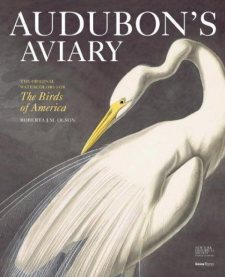


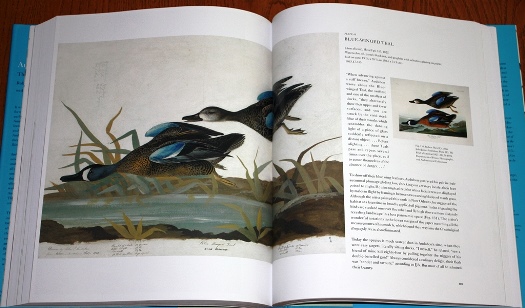
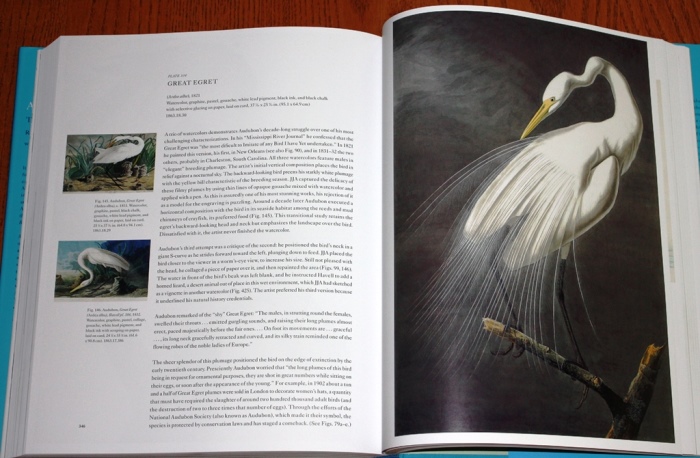
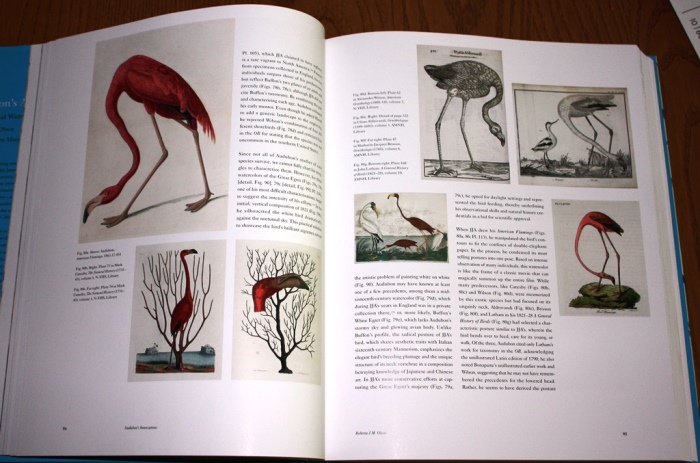


Comment